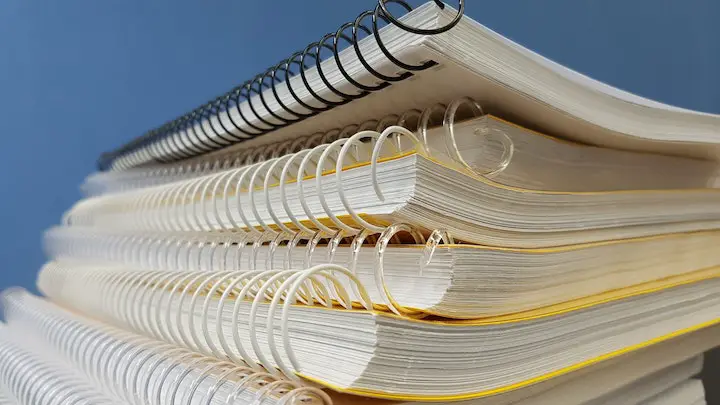Staples are a regular sight in papers or documents. They are among the easiest and neatest ways to join multiple papers. When a piece of paper with staples is no longer essential, you must prepare it for recycling. But can you recycle paper alongside its staple?
You can recycle paper with staples only after removing the staples. In other words, you will recycle two different materials separately: paper and staples.
This guide will walk you through why it is best to recycle paper with staples and the various processes for each recycling process.
How to Recycle a Paper with Staples

Recyclers remove staples from paper during recycling. Here are the necessary steps required to recycle paper:
1. Collection
The first step in preparing papers for recycling is to gather them together and send them to a recycling facility. This process is known as collection.
At this stage, the entire accumulation should undergo inspection for contamination, such as papers with food substances or chemicals. Such papers should go to landfills instead.
2. Delivery and sorting
Once the paper has been appropriately packaged in a bin, a recycling hauler will come for it and transport it or deliver it to a material recovery facility (MRF) for sorting.
Sorting involves the segregation of paper based on types or textures. In other words, a glossy magazine and standard printer paper will not undergo the same recycling process.
3. Shredding and pulping
After sorting, the paper should go to a paper mill, where recycling begins. At the paper mill, paper is shredded into smaller bits or scraps with the help of chemicals such as hydrogen peroxide, sodium silicate, and sodium hydroxide.
These chemicals further break the paper into fibers until a mushy “pulp” concoction forms. Pulp is the raw material for producing recycled papers.
Also, if your paper contains clips or staples, they will be removed.
4. De-Inking
De-inking involves placing the pulp in a large floatation tank with more chemicals and air bubbles. These chemicals and air bubbles will remove the dyes and ink present in the pulp.
Also, if you wish to generate colored papers, you can add more dye. Once de-inking is complete, the pulp goes into a paper machine.
5. Drying
The primary role of a paper machine is to produce dried paper from pulp. A paper machine is a massive roller that squeezes excess water from the pulp and heats it to form long, dry paper rolls.
These rolls of paper eventually get to various companies that manufacture paper products.
How to Recycle Staples on Paper
Remember that staples get separated during recycling. What exactly is their fate? Well, they undergo recycling too. While the process is somewhat similar to paper recycling, there are some differences.
Here are the steps necessary to recycle staples:
1. Collection
Staples also undergo collection. If you are dealing with tiny ones, using a magnet makes this process easier and faster.
Drop your staple collection in a bin and wait for a hauler to help you transport it. You can also do this yourself.
2. Sorting
Sorting involves separating staples (primarily recyclable steel) from other clinging materials like plastic.
3. Compacting
After sorting, recyclers place the staples in a compactor for compacting – dividing the metals into batches for easy recycling.
4. Shredding
Shredding is a process that divides batches of staples into tiny particles or fragments, usually smaller than the staples themselves.
5. Heating and refining
In the heating stage, shredded metals burn at high temperatures to become liquid steel. In this form, you can convert them into other materials.
This liquid metal also undergoes purification to get rid of dirt and impurities. This plays a role in the quality of its end products.
7. Cooling and solidification
The last step for recycling staples is allowing them to cool and solidify. In this state, staples readily transform into useful products.
Can You Recycle Cardboard with Staples?
Just like you can recycle paper with staples, a similar approach works for cardboard with staples. In other words, staples removal will also occur during sorting, awaiting a different recycling process.
Are Staples Bad for the Environment?
Staples are not biodegradable. When you dump them in landfills or just anywhere, you are exposing yourself and your environment to certain risks, like:
1. Pollution
As tiny as staples are, they can pollute water bodies or litter the environment. This is often the case after they melt or corrode in landfills.
2. Global warming
Since the manufacturing process of staple steel results in carbon dioxide emissions, it is safe to say staples contribute a little to the emission of greenhouse gases.
3. Injury
Aside from the negative environmental implications, having stapling litter can cause minor injuries to you or your children.
Hence, it is imperative to have a work area for staple-related activities and easy cleaning.
FAQs
Which paper cannot be used for recycling?
Examples of paper that is non-recyclable include paper made from food waste, cereal, juice, coated paper, and treated paper.
PE-coated magazines and paper towels are also not ideal for recycling.
Can receipts be recycled?
Paper receipts are recyclable if your city has an organic program for them.
Thermal receipts, on the other hand, are not recyclable.
Can you recycle Christmas cards?
Christmas cards are recyclable. However, you must remove embellishments like batteries, glitter, plastic, and electronics before recycling.
Conclusion
Staples keep things tidy at home or in offices by holding papers together. However, when these papers are no longer useful, both materials cannot be recycled together.
Recyclers either have to remove staples before or midway through the process. These staples are collected and should be transported to a steel recycling center for proper treatment.
I hope you found this guide helpful. If you are interested in other guides relating to recycling, please visit biotrux.
Thank you for reading.

